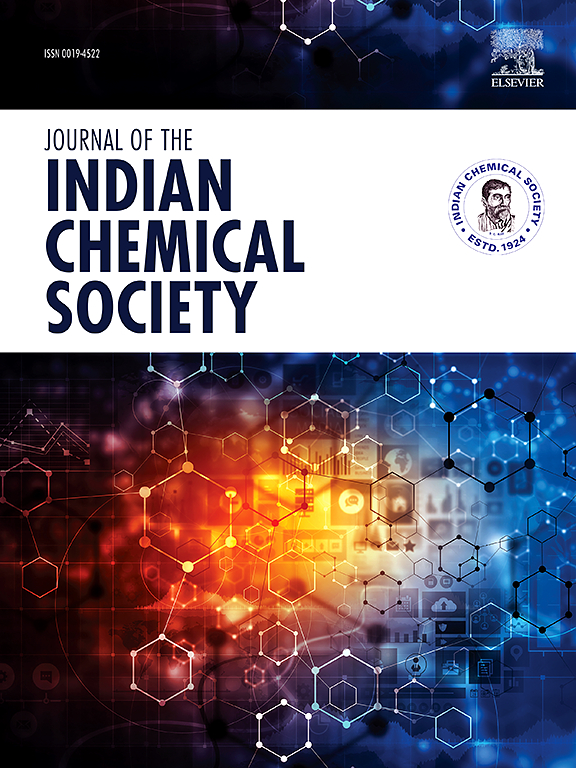Synthesis, characterization, DFT, HOMO-LUMO, MEP analysis, and in-silico docking studies of piperidine derivatives
IF 3.2
4区 化学
Q2 CHEMISTRY, MULTIDISCIPLINARY
引用次数: 0
Abstract
An eco-friendly and efficient approach for synthesizing N-(4-chlorophenyl)-2,6-bis(4-hydroxyphenyl)-4-oxopiperidine-3-carboxamide involves the condensation of 4-chloroacetoacetanilide with 4-hydroxybenzaldehyde, utilizing ammonium formate as a catalyst. This method not only improves reaction efficiency but also reduces environmental impact by employing a safer catalyst. The structure of the resulting compound was extensively characterized through various spectral techniques. Fourier Transform Infrared (IR) spectroscopy identified key functional groups via distinct absorption bands, while both 1H and 13C NMR spectroscopy provided comprehensive details about the hydrogen and carbon environments, confirming the molecular structure and positions of substituents. Elemental analysis further ensured the compound's purity and composition. Density functional theory (DFT) simulations were performed to study its electronic characteristics and reactivity. DFT calculations provide information about molecular shape, electronic distribution, and stability. Additionally, molecular docking studies assessed the compound's potential interactions with biological targets, highlighting its binding affinity and possible therapeutic uses.

求助全文
约1分钟内获得全文
求助全文
来源期刊
CiteScore
3.50
自引率
7.70%
发文量
492
审稿时长
3-8 weeks
期刊介绍:
The Journal of the Indian Chemical Society publishes original, fundamental, theorical, experimental research work of highest quality in all areas of chemistry, biochemistry, medicinal chemistry, electrochemistry, agrochemistry, chemical engineering and technology, food chemistry, environmental chemistry, etc.

 求助内容:
求助内容: 应助结果提醒方式:
应助结果提醒方式:


